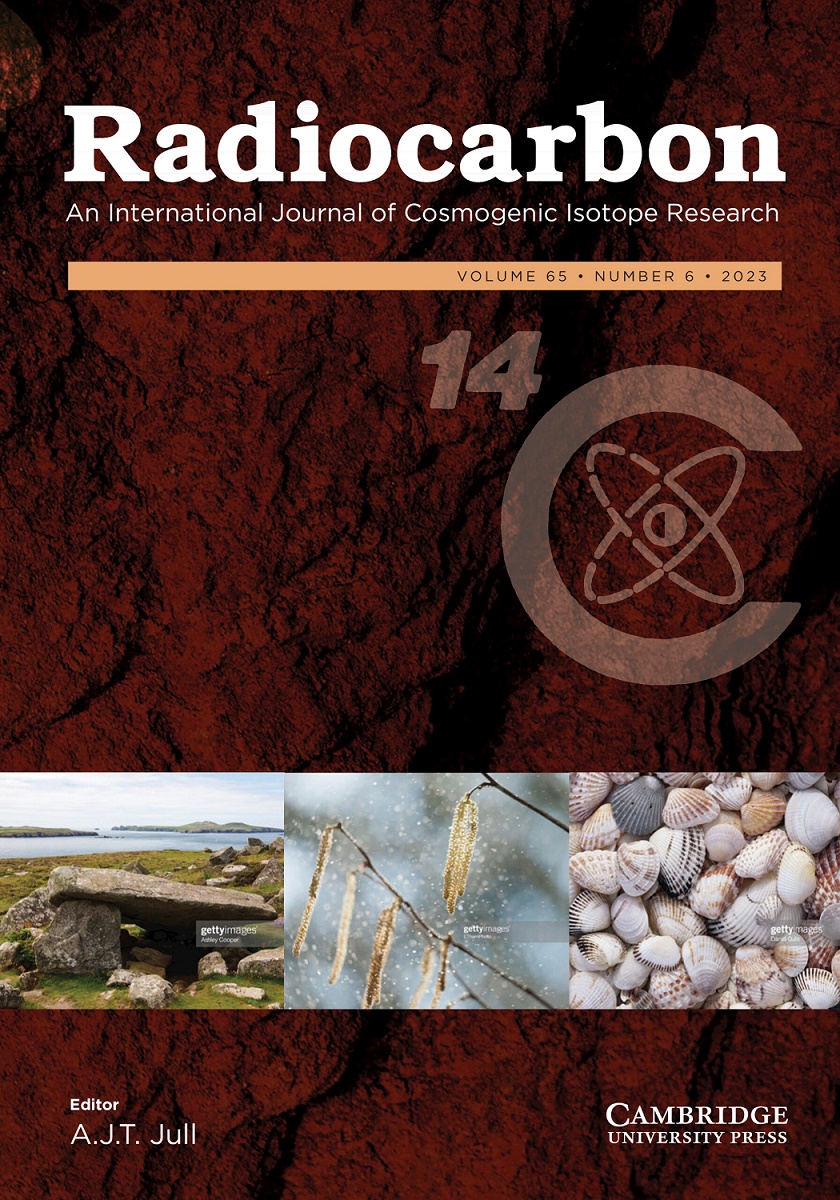A VIEW FROM THE COUNTRYSIDE: RADIOCARBON CHRONOLOGY FOR ZAOLINHETAN OF THE PRE-ZHOU CULTURE IN EARLY DYNASTIC CHINA
IF 1.3
3区 地球科学
Q2 GEOCHEMISTRY & GEOPHYSICS
引用次数: 0
Abstract
The conquest of the Shang Dynasty at Anyang around 1046 BCE by the Zhou is one of the major events for not only Chinese Bronze Age but also early interaction between the pastoralist groups from the Eurasian Steppes and agriculture ones in the Central Plains of China. It is well-known from historical texts that the pre-Zhou people lived in the ancient Bin region (豳), the exact location of which is unclear, but most likely in the Jing River valley. At some point the leader Gugong Danfu (古公亶父) moved from Bin to the capital Qi (Zhouyuan), which preceded the Zhou invasion of Anyang. We have produced a new high resolution radiocarbon chronology for Zaolinhetan, a small settlement in the pre-Zhou heartland. This shows not only an exceptionally long chronological span for the site, but also a different phasing compared to the traditional pottery typology, which raises new questions regarding the regional variation of pottery typologies. Intriguingly, the analysis also reveals a rapid abandonment of Zaolinhetan around 1100 BCE, at the same time many larger sites, such as Zhouyuan, which later became the capital of the Western Zhou dynasty, were significantly expanding. We argue that the drastic decline of Zaolinhetan as revealed by the substantial number of radiocarbon dates and probably also the movement of pre-Zhou political center from Bin to Qin, was part of bigger picture that involved a range of social and environmental factors.从乡村看世界中国早期先周文化枣林河滩的放射性碳年代学
周人于公元前 1046 年左右在安阳征服商朝,这不仅是中国青铜时代的重大事件之一,也是欧亚草原游牧民族与中国中原农耕民族早期交往的重大事件之一。史书记载,先周人生活在古豳地区,具体位置不详,但很可能在泾河流域。古公亶父从豳迁都齐国(周原),比周朝入侵安阳更早。我们为先周中心地带的一个小聚落枣林河滩制作了新的高分辨率放射性碳年代学。这不仅表明该遗址的年代跨度特别长,而且与传统的陶器类型学相比,其分期也有所不同,这就提出了有关陶器类型学区域差异的新问题。耐人寻味的是,分析还揭示出枣林河滩在公元前 1100 年左右被迅速废弃,与此同时,许多大型遗址,如后来成为西周王朝都城的周原,都在显著扩张。我们认为,大量放射性碳年代所揭示的枣林河滩的急剧衰落,以及先周政治中心从豳到秦的迁移,都是涉及一系列社会和环境因素的大事件的一部分。
本文章由计算机程序翻译,如有差异,请以英文原文为准。
求助全文
约1分钟内获得全文
求助全文
来源期刊

Radiocarbon
地学-地球化学与地球物理
CiteScore
16.20
自引率
6.00%
发文量
85
审稿时长
6-12 weeks
期刊介绍:
Radiocarbon serves as the leading international journal for technical and interpretive articles, date lists, and advancements in 14C and other radioisotopes relevant to archaeological, geophysical, oceanographic, and related dating methods. Established in 1959, it has published numerous seminal works and hosts the triennial International Radiocarbon Conference proceedings. The journal also features occasional special issues. Submissions encompass regular articles such as research reports, technical descriptions, and date lists, along with comments, letters to the editor, book reviews, and laboratory lists.
 求助内容:
求助内容: 应助结果提醒方式:
应助结果提醒方式:


